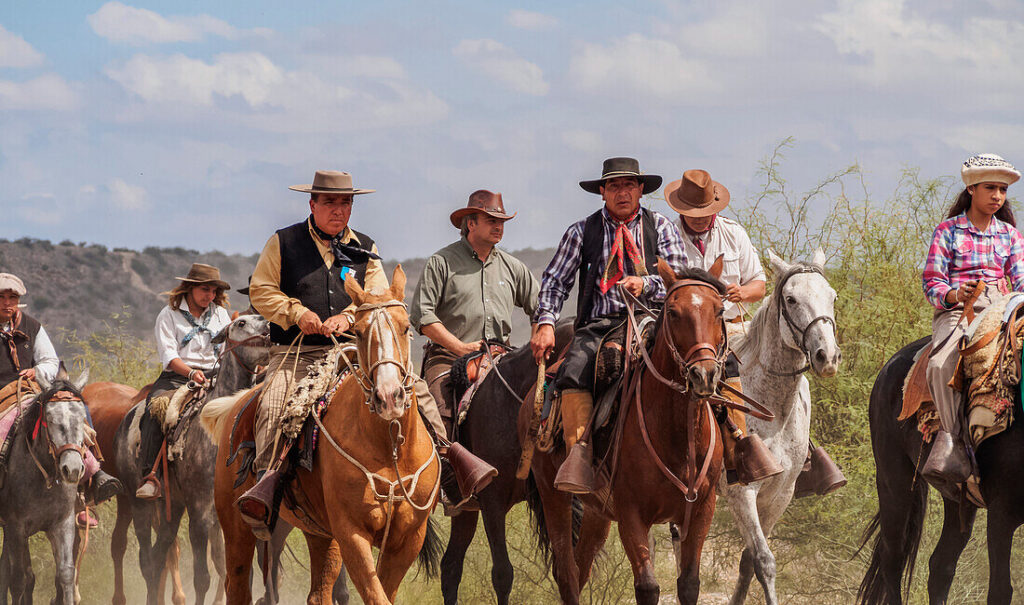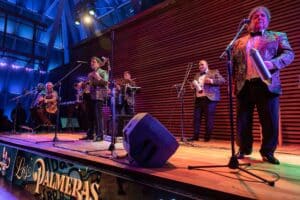Chamamé and Folklore Argentina: A Journey Through Music and Culture
Argentina, a country rich in cultural heritage, is home to two vibrant musical genres that have captivated hearts both locally and internationally: Chamamé and Folklore. These genres, while distinct, are deeply intertwined with the nation’s identity, reflecting its history, traditions, and the soul of its people. In this blog post, we’ll delve into the world of Chamamé and Folklore Argentina, exploring their origins, cultural significance, iconic songs, famous artists, and where to experience these musical treasures.
What is Chamamé and Folklore?
Chamamé: The Rhythmic Soul of the Northeast
Chamamé is a musical genre that originates from the northeastern region of Argentina, particularly in the provinces of Misiones, Corrientes, and Formosa. This genre is deeply rooted in the cultural melting pot of the area, influenced by indigenous, African, and European traditions. Chamamé is characterized by its rhythmic beats, often performed with instruments like the accordion, guitar, and bass. Its lively tempo makes it a favorite at social gatherings and traditional dances.
The history of Chamamé dates back to the 19th century, emerging as a fusion of various musical styles brought by European immigrants and African slaves. Over time, it evolved into a unique genre that reflects the cultural diversity of the region. Chamamé gained popularity in the mid-20th century, becoming a symbol of regional identity and pride.
Folklore Argentina: The Heartbeat of the Nation
Folklore Argentina, or “Folklore Argentino,” encompasses a broad range of traditional music and dance styles that have been passed down through generations. It is deeply connected to the country’s rural areas and the gaucho (cowboy) culture. Folklore music often tells stories of love, nature, and the struggles of everyday life, resonating with people from all walks of life.
The origins of Folklore Argentina can be traced back to the indigenous and European settlers who brought their musical traditions to the region. Over time, these influences blended together, creating a unique sound that is quintessentially Argentine. Folklore has played a significant role in preserving the country’s cultural heritage and continues to be celebrated through festivals and traditional events.
Cultural Meaning: The Soul of Argentina
Both Chamamé and Folklore Argentina hold deep cultural significance, serving as a bridge between the past and present. These genres are more than just music; they are a way of life, reflecting the values, traditions, and history of the Argentine people.
Chamamé: A Symbol of Regional Identity
Chamamé is more than just a musical genre; it is a symbol of regional identity in northeastern Argentina. The genre has become a source of pride for the local communities, representing their cultural diversity and resilience. Chamamé is often performed during traditional festivals and social gatherings, bringing people together and fostering a sense of belonging.
The cultural significance of Chamamé is also reflected in its recognition by UNESCO as an Intangible Cultural Heritage of Humanity. This recognition has helped to promote the genre globally, attracting new audiences and ensuring its preservation for future generations.
Folklore Argentina: A Reflection of National Identity
Folklore Argentina is deeply rooted in the country’s national identity, reflecting the history and traditions of its people. The genre is closely associated with the gaucho culture, which is a symbol of Argentine independence and resilience. Folklore music often tells stories of love, nature, and the struggles of everyday life, making it relatable and endearing to people across the country.
Folklore has also played a significant role in preserving Argentina’s cultural heritage. Traditional dances, such as the chacarera and the zamba, are an integral part of Folklore, and they continue to be performed and celebrated during festivals and events.
Chamamé: Rhythms That Move the Soul
Chamamé is known for its lively rhythms and catchy melodies, making it a favorite among music lovers. Some of the most iconic Chamamé songs include:
- “El Chamamé de mi Tierra” by Los Alonsitos: This song is a celebration of the Chamamé genre and the cultural richness of northeastern Argentina.
- “La Calesita” by Antonio Tarragó Ros: This song is a classic example of Chamamé, with its infectious rhythm and nostalgic lyrics.
- “Chamamé Criollo” by Los Hermanos Barrios: This song showcases the fusion of traditional Chamamé with modern influences, creating a unique and captivating sound.
Folklore Argentina: Songs That Tell a Story
Folklore Argentina is known for its storytelling through music, with songs that often reflect the struggles and triumphs of everyday life. Some of the most iconic Folklore songs include:
- “La Zamba de mi esperanza” by Los Chalchaleros: This song is a beautiful example of the zamba style, with its haunting melody and poignant lyrics.
- “Chacarera del Rancho” by Atahualpa Yupanqui: This song is a classic chacarera, a traditional dance style that is deeply rooted in Folklore Argentina.
- “Borracho y Olvidao” by Jorge Cafrune: This song is a powerful ballad that tells the story of a man who has lost everything, but still holds on to his dignity.
Famous Artists: The Voices of Tradition
Both Chamamé and Folklore Argentina have been shaped by the contributions of famous artists who have dedicated their lives to preserving and promoting these genres. These artists are not just musicians; they are cultural ambassadors, carrying the torch of tradition to new generations.
Chamamé: The Masters of Rhythm
Chamamé has been influenced by a number of talented artists who have helped to popularize the genre. Some of the most famous Chamamé artists include:
- Antonio Tarragó Ros: Known as the “King of Chamamé,” Tarragó Ros is a legendary figure in the genre. His music has been instrumental in promoting Chamamé both in Argentina and around the world.
- Los Alonsitos: This group has been a driving force in keeping Chamamé alive, blending traditional rhythms with modern influences.
- Los Hermanos Barrios: This duo has been praised for their innovative approach to Chamamé, creating a unique sound that appeals to a wide audience.
Folklore Argentina: The Keepers of Tradition
Folklore Argentina has been shaped by a number of iconic artists who have dedicated their lives to preserving the genre. Some of the most famous Folklore artists include:
- Atahualpa Yupanqui: A legendary figure in Folklore Argentina, Yupanqui is known for his deep, resonant voice and his ability to tell stories through music.
- Jorge Cafrune: A pioneer of Folklore Argentina, Cafrune is known for his powerful ballads that reflect the struggles and triumphs of everyday life.
- Mercedes Sosa: Known as the “Voice of the Voiceless,” Sosa is a iconic figure in Folklore Argentina, using her music to advocate for social justice and human rights.
Chamamé: Festivals and Celebrations
Chamamé is often performed during traditional festivals and celebrations in northeastern Argentina. One of the most famous events is the Festival Nacional del Chamamé, held annually in the city of Corrientes. This festival brings together some of the biggest names in Chamamé, offering a showcase of the genre’s rich cultural heritage.
In addition to festivals, Chamamé is also performed in local bars and clubs, where you can experience the music in a more intimate setting. These venues offer a unique opportunity to connect with the local community and experience the music as it was meant to be heard.
Folklore Argentina: Traditional Gatherings and Events
Folklore Argentina is deeply rooted in traditional gatherings and events, where music and dance come together to celebrate the country’s cultural heritage. One of the most famous events is the Festival Nacional de Folklore de Cosquín, held annually in the province of Córdoba. This festival is a celebration of Folklore Argentina, featuring performances by some of the biggest names in the genre.
In addition to festivals, Folklore Argentina is also performed during traditional asados (barbecues) and gaucho gatherings, where music and dance are an integral part of the celebration. These events offer a unique opportunity to experience the music in a traditional setting, surrounded by the sights and sounds of Argentine culture.
Conclusion: A Legacy of Music and Culture
Chamamé and Folklore Argentina are more than just musical genres; they are a reflection of the country’s rich cultural heritage. These genres have been shaped by the contributions of talented artists and have become an integral part of Argentina’s identity. From the lively rhythms of Chamamé to the storytelling of Folklore, these genres offer a unique glimpse into the soul of Argentina.
As you explore the world of Chamamé and Folklore Argentina, remember that this music is not just something to be listened to; it is something to be experienced. Whether you’re attending a festival, listening to a live performance, or simply enjoying the music at home, Chamamé and Folklore Argentina have the power to move and inspire.
So, take a journey through the music of Argentina, and let the rhythms and melodies of Chamamé and Folklore Argentina capture your heart. Who knows? You might just discover a new favorite genre.






